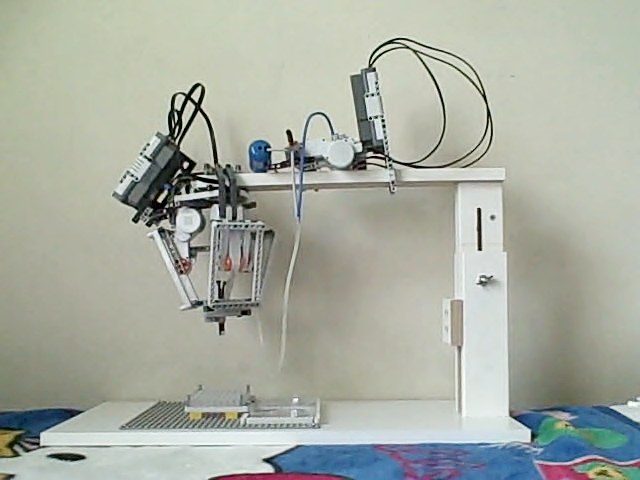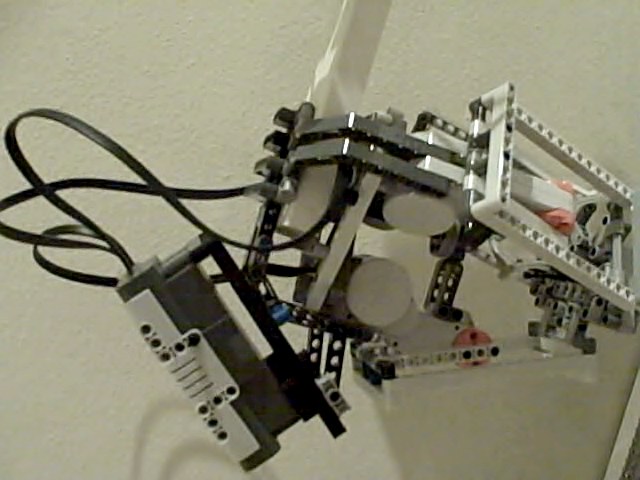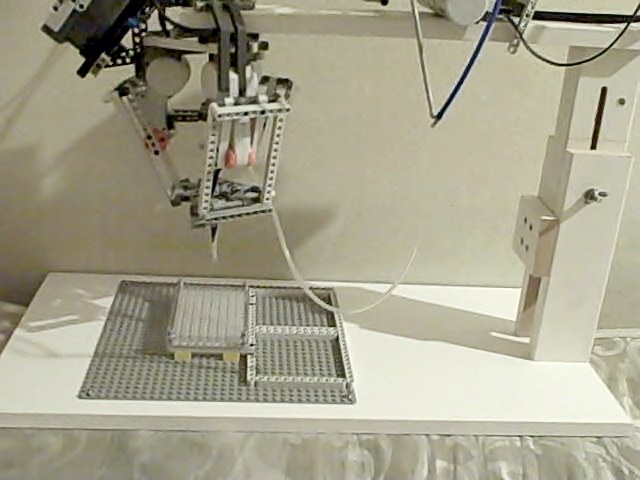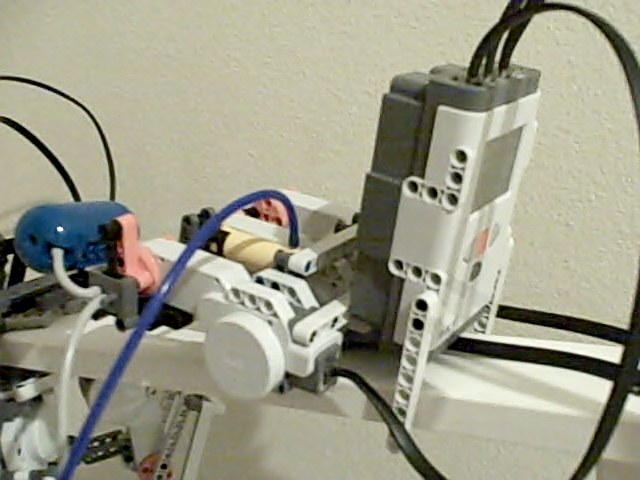Team:Washington-Software/Project
From 2009.igem.org

| Home | Team | Project | Modeling | Notebook | Challenges | Achievements |
|---|
Contents |
Overall project
Project Summary
Hardware
- Lego Bricks
- Commonly accessible industry standard
Firmware
- RobotC
- Made in CMU Robotics Academy
- Enables floating point precision
Software
- ALPHA module
- Precise reverse triangulation using Rotational Matrix
- Controller of Master-Slave Synchronization
- Accurately positions pipette head
- PHI module
- Pneumatic control to suck and dispense fluid
- Compression pump to "air-clean" system
LegoRoboBrick Modules
This is BioBrick-A-Bot from a side view.
Module ALPHA
ALPHA stands for Automatic Lego Pipet Head Assembly. This module was created in August 21, 2009. It consists of three double-jointed arms as shown in the picture. One joint is referred as the control arm and is connected to the motor which controls entirely the joint. The other joint, referred as a linkage is loosely attached and moves in a sphere. The end of this attaches to the platform which holds the four pipette tips.
- Videos
- This video shows that the same code can be used for other versions of ALPHA. The only difference is 6 physical constants:
- Top Offset
- Bottom Offset
- Control Arm Length
- Linkage Arm Length
- Inter-arm Angle
- Gear Ratio
Module BETA
BETA stands for Biobrick Environment Testing Apparatus. As the name infers, this module provides the environment where the robot can move and conduct its task. It consists of a telescoping frame and a big lego plate under the stand. The telescoping fram is used for holding ALPHAs and PHIs, and the lego plate is where the 96-well plates and petri dishes are placed.
Module PHI
PHI stands for Pneumatics Handling Interface. This module is basically the pipette. It consists of three motors as following:
- Motor A.
- This motor controls the flow of the air. If you look at it from the side when the switch is visible:
- When the switch is to the left, there is a direct flow from the pipet head to the air. This makes it possible to use the second motor (motor B) to suck without sucking any liquid, and enabling it to blow extra air out.
- When the switch is in the middle, there is no connection.
- When the switch is to the right, the pressure built up in the air tank is released into the pipette head.
- This motor controls the flow of the air. If you look at it from the side when the switch is visible:
- Motor B.
- This motor is connected to a piston, so it can suck and dispense liquid.
- Motor C.
- This motor is connected to to compressors compressing air in the air tank. It runs for 7 seconds once the air is released.
- Videos
- This video shows Phi running by itself.
 "
"



